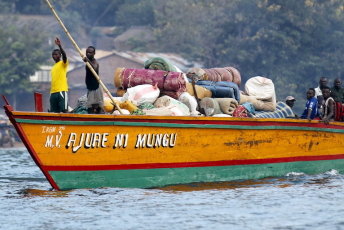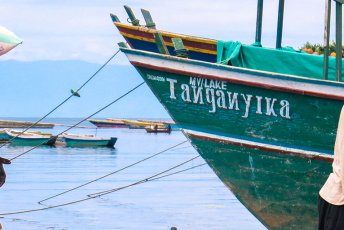- The recent tripling of wildlife crime incidents carries a hidden human cost, threatening lives, communities, tourism and development
- Illicit animal products share trade routes with illegally trafficked weapons and drugs
- Wildlife crime is an indicator of South Africa’s challenges related to poverty, land, corruption and violence
- Wildlife crime is the fourth most lucrative form of organised crime globally and one of Southern Africa’s most expensive security challenges
Pretoria, South Africa – The number of poaching incidents has tripled in Southern Africa since 2010, endangering lives, threatening communities and undermining the local economy.
Poachers of endangered species often benefit from moving their illicit harvest along the networks of criminal syndicates, which traffic deadly arms and drugs. Getting to grips with this phenomenon and being able to establish clear behavior patterns remains difficult due to gaps in data recording and reporting. This is according to ENACT, a new EU-supported project that monitors and develops responses to transnational organised crime in Africa.
‘The illicit trade in wildlife is a very serious conservation issue, but has important social impacts too,’ ENACT researcher Ciara Aucoin said at a seminar on 21 September ahead of World Rhino Day. ‘Syndicates operate in more than one sector. The trade in wildlife products like rhino horn, pangolin and lion bones supports a supply of guns and drugs and contributes to challenges of corruption at multiple levels.’
The human cost of wildlife crime is immense. ‘Poaching can drive away tourism, the economic engine of areas like the Lowveld [in Mpumalanga province]. Pockets within local communities are criminalised; the same communities where many rangers and their families live,’ said Major-General Johan Jooste, Head of Special Projects at SANParks. While rhino horn is especially lucrative, many other wildlife products, including elephant ivory, abalone and animal pelts are also traded. Poachers are often the most visible part of the criminal networks that straddle the globe, but they make up just one part of a worldwide crime ring.
Wildlife crime is the fourth most lucrative organised crime globally and one of the most expensive security challenges facing Southern Africa. The true value of wildlife crime is difficult to ascertain, but estimates are as high as US$23 billion (R299 billion) a year, according to Global Financial Integrity.
South Africa spends R200 million annually and employs nearly 450 rangers just to protect the Kruger National Park, a magnet for tourists who marvel at one of Africa’s best preserved wilderness areas.
Fighting wildlife crime is an uphill battle. Only five tonnes of the estimated 37 tonnes of rhino horn poached between 2010 and 2016 were seized by law enforcement agencies, according to the wildlife trade monitoring network, TRAFFIC. Rhinos are among the species facing perilous decline and possible extinction.
United Nations Comtrade data shows that the import of hunting rifles into Mozambique from 2010 to 2015 increased at a similar rate as poaching in the Kruger Park, according to Khristopher Carlson, a senior researcher at the Swiss-based Small Arms Survey. ‘A correlation between the two trends, warrants closer inspection. There’s enough evidence to suggest that there’s something suspicious going on there,’ said Carlson.
‘Combating wildlife crime must remain a priority,’ said ENACT head Eric Pelser. ‘We need to pay more attention to the aspects of wildlife crime that are harder to measure, such as the drivers of demand and how poachers and smugglers are recruited. Better understanding leads to better tactics. We can’t afford to get it wrong anymore.’
With regard to South Africa, EU Ambassador Marcus Cornaro noted: ‘With 79% of the world's African rhinos found in South Africa, there can be no doubt about the critical importance of South Africa in the fight against the scourge of poaching, as well as in efforts to address the trafficking of rhino horn and related criminal activities. Unambiguous legislation, persistent law enforcement and coordinated action along the entire wildlife trafficking "value chain" – including tackling demand – are crucial elements in combating this organised crime and ensuring sustainability. Importantly, combating wildlife trafficking also requires that local communities in and around protected areas are involved.’
Current strategies to save Africa’s wildlife include developing militarised anti-poaching methods, working with communities surrounding wildlife areas, and disrupting the sophisticated networks that recruit poachers from local communities. Syndicates have stayed ahead of the law by bribing officials and exploiting weak law enforcement on the long borders between Southern Africa’s richest wildlife reserves.
ENACT’s research shows that most poaching occurs in South Africa, followed by Namibia and Zimbabwe, where poachers are increasingly poisoning their prey with cyanide. The top non-African destinations for wildlife products are China, Hong Kong and Vietnam.
ENACT is pioneering a new approach to monitoring transnational organised crime in Africa – including wildlife crime – using a methodology first developed to track armed conflict and global terrorism. It will generate new data and analysis to contribute towards more effective policies and law enforcement.
‘We know Africa’s wildlife heritage is being destroyed and we need more information on how to stop this,’ says Pelser. ENACT’s approach emphasises that strategy needs to be built on a better understanding of the problem, from the push and pull factors that attract poachers, to the tactics of big money syndicates.
South Africa’s ability to monitor and disrupt wildlife crime is also an indicator of its ability to deal with other important challenges, from land ownership to corruption.
‘Losing this battle is not just about the wildlife. It would also mean we have also lost our ability to combat crime, monitor our borders, give rural people a stake in the economy, and stop the plundering of resources,’ Aucoin said.
For enquiries and to arrange media interviews, contact:
Gabi Falanga, Proof Communication Africa, [email protected], +27 79 458 0888
For more:
ENACT website - www.enactafrica.org
Research paper - Guns, poison and horns: Organised wildlife crime in Southern Africa
Explainer - What is wildlife crime and why does it affects us?
Infographic - Explaining the data gaps in wildlife crime
ENACT Observer - Wildlife crime: Why diverse data will drive better responses







